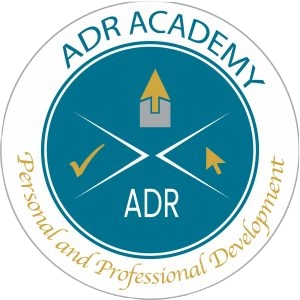Short Course Description
Course Overview: In this online certificate course, This course is designed to help participants understand the importance of maintaining a healthy work-life balance and develop strategies to achieve it. By exploring various aspects of work-life balance, participants will gain valuable insights into managing their time effectively, setting achievable goals, reducing stress, and creating boundaries between work and personal life.
Educational Approach
This course is an online learning program with suggested readings and course assignments as described in this course outline. This course is self-directed, which means that students may study and complete assignments at times that are most convenient for each student.
Course Textbook
None required. The modules are standalone and provided the necessary information and practice needed to complete the course.
Module One: Getting Started
- Workshop Objectives: Clear explanation of the course goals and what participants will learn.
Module Two: Benefits of a Healthy Balance
- Why It's Important: Understanding the significance of work-life balance for overall well-being.
- Increased Productivity: How a balanced lifestyle can enhance productivity in both personal and professional domains.
- Improved Mental and Physical Health: The impact of work-life balance on mental and physical well-being.
- Increased Morale: Recognizing how a balanced life contributes to higher job satisfaction.
- Case Study: Analyzing real-life scenarios related to the benefits of work-life balance.
Module Three: Signs of an Imbalance
- Health Risks: Recognizing health-related consequences of an imbalanced lifestyle.
- Absenteeism: Understanding the correlation between an unhealthy balance and absenteeism at work.
- Burnout: Identifying the signs of burnout and its connection to work overload.
- Stress: Examining the effects of excessive stress on personal and professional life.
- Case Study: Analyzing real-life cases of work-life balance challenges.
Module Four: Employer Resources
- Offer More Employee Control: Strategies employers can implement to give employees more control over their schedules.
- Ask Employees for Suggestions: Encouraging a culture of feedback and open communication to improve work-life balance.
- Employee Assistance Program (EAP): Introducing EAPs as resources for employees facing personal challenges.
- Reward Your Staff: Recognizing and rewarding employees who maintain a healthy work-life balance.
- Case Study: Exploring examples of successful employer initiatives.
Module Five: Tips in Time Management
- The Urgent/Important Matrix: A time management tool to prioritize tasks effectively.
- Learn to Say No: Understanding the importance of setting boundaries and saying no when necessary.
- Stay Flexible: Adapt to changes and unexpected events while maintaining balance.
- 80/20 Rule: Applying the Pareto Principle to improve productivity and time allocation.
- Case Study: Applying time management techniques to real-life scenarios.
Module Six: Goal Setting
- The Three Ps: Understanding the importance of setting Personal, Professional, and Physical goals.
- SMART Goals: Learning the SMART criteria to set specific, measurable, achievable, relevant, and time-bound goals.
- Visualization: Utilizing visualization techniques to reinforce goal achievement.
- Prioritizing Your Goals: Ranking and organizing goals to maintain a balanced focus.
- Case Study: Setting and evaluating personal and professional goals.
Module Seven: Optional Ways to Work
- Telecommuting: Exploring the benefits and challenges of remote work arrangements.
- Job Sharing: Understanding how job sharing can contribute to a better work-life balance.
- Job Redesign: Rethinking job roles and responsibilities for improved balance.
- Flex Time: Analyzing the advantages of flexible work hours.
- Case Study: Assessing the implementation of alternative work options in organizations.
Module Eight: At Work
- Leave Home Stress at Home: Strategies for leaving personal worries behind during work hours.
- Break Up Large Tasks: Techniques to break down complex tasks and manage them efficiently.
- Delegate: Understanding the importance of delegating tasks to maintain balance.
- Set Accurate Goals: Ensuring that work-related goals align with overall balance objectives.
- Case Study: Applying work-related strategies to achieve balance.
Module Nine: At Home
- Leave Work Stress at Work: Methods to prevent work-related stress from affecting personal life.
- Turn Your Phone Off: Setting boundaries with technology to establish quality personal time.
- Take Some "Me" Time: Recognizing the importance of self-care and leisure activities.
- Maintain Your Boundaries: Communicating and reinforcing personal boundaries with family and friends.
- Case Study: Integrating work-life balance techniques at home.
Module Ten: Stress Management
- Exercise: Understanding the role of physical activity in stress reduction.
- Eating Well: The impact of a balanced diet on stress management.
- Getting Enough Sleep: Recognizing the importance of quality sleep for overall well-being.
- Self-Assessment: Assessing personal stress levels and identifying coping mechanisms.
- Case Study: Implementing stress management techniques in real-life situations.
Module Eleven: Working in a Home Office
- Setting Up a Home Office: Creating a productive and comfortable home workspace.
- Setting Boundaries: Establishing clear boundaries between work and personal life while working from home.
- Dealing With Distractions: Strategies to minimize distractions and maintain focus.
- Make a Schedule and Stick to It: Creating a structured daily routine for remote work.
- Case Study: Addressing challenges and benefits of working from home.
Module Twelve: Wrapping Up
- Words from the Wise: Reflection on key learnings from the course.
- Review of Parking Lot: Addressing any remaining questions or topics from the Parking Lot activity.
- Lessons Learned: Encouraging participants to share their main takeaways from the course.
- Completion of Action Plans and Evaluations: Creating individual action plans to apply course concepts and gathering feedback on the course's effectiveness.


